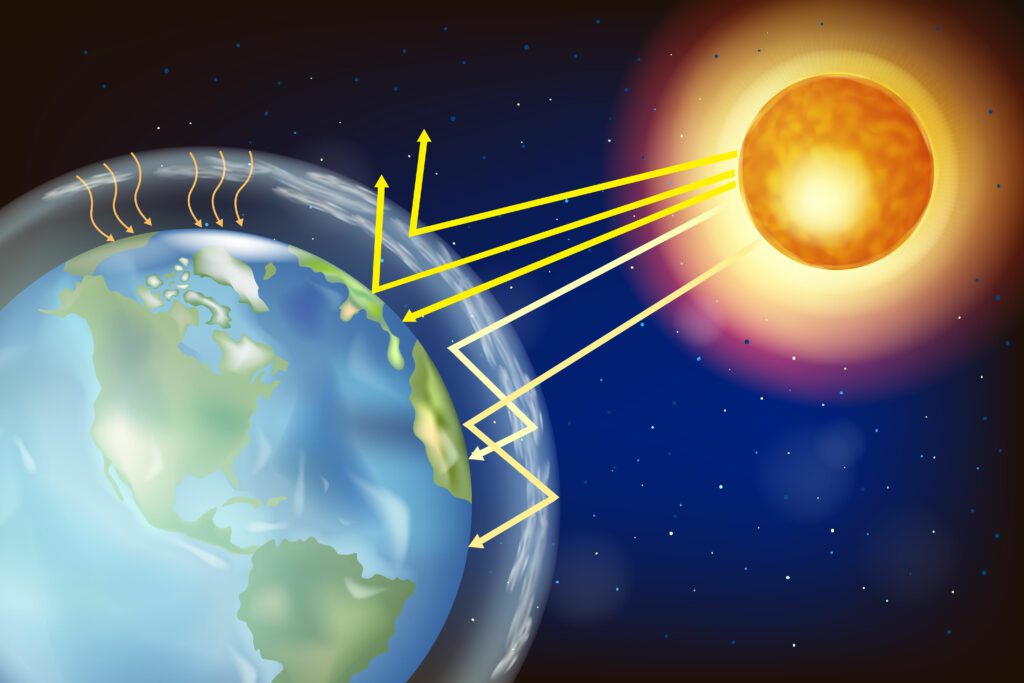
Chlorofluorocarbons, commonly known as CFCs, were once hailed as a technological breakthrough in the field of refrigeration and air-conditioning. While their unique chemical properties made them ideal for use in these applications—as well as in solvents, foam insulation, and aerosol propellants—the stability of CFCs also made them a significant hazard to the environment. So, the question arose: how could such a stable compound pose such a threat? We’ve got the answer and more below, so read on!
Chlorofluorocarbons (CFCs) are a class of organic compounds that contain carbon, chlorine, and fluorine atoms. They are highly stable and do not easily react with other substances. This stability made them ideal for use in various applications, such as refrigerants, solvents, and aerosol propellants. However, their chemical properties also make them hazardous to the environment, as ozone-depleting substances.

When CFCs are released into the atmosphere, they can rise into the stratosphere where they can be broken down by ultraviolet (UV) radiation from the sun. This breakdown releases chlorine atoms, which can then react with ozone molecules. In these reactions, chlorine reacts with an ozone molecule to form chlorine monoxide and oxygen gas. The chlorine monoxide can then react with another ozone molecule to release another chlorine atom, and the cycle rapidly continues. This leads to a depletion of the ozone layer and a reduction in its ability to filter out harmful UV radiation from reaching the surface below.
The depletion of the ozone layer has significant health and environmental implications. Increased levels of UV radiation can increase the incidence of skin cancer, cataracts, and other health problems in humans and animals. It can also lead to reduced agricultural productivity and harmed marine ecosystems.
In addition to their impact on the ozone layer, CFCs are potent greenhouse gases. They have a high global warming potential, meaning they have a strong ability to trap heat in the atmosphere. This is due to the presence of fluorine atoms in CFC molecules, which are very electronegative and contribute to the molecule's ability to absorb infrared radiation, absorbing heat going both in and out of the atmosphere and contributing to climate change. While the ozone is also a greenhouse gas, its protective benefits far outweighed the greenhouse properties.

To address the environmental hazards posed by CFCs, the Montreal Protocol was signed in 1987. The Protocol committed countries to phase out the production and consumption of ozone-depleting substances, including CFCs, halons, and other chemicals. The phase-out of CFCs has led to the development and use of alternative chemicals, such as hydrofluorocarbons (HFCs), which are less harmful to the environment.
Today, the treaty is evolving in light of new scientific, technical, and economic development, with the most recent major addition being the Kigali Amendment of 2016. This amendment aims to reduce the use of HFCs by 80% by 2047. While HFCs were a satisfactory alternative when CFCs were being phased out worldwide, they are still greenhouse gases with the potential to add to global warming in their own regard.
The Montreal Protocol's success can be attributed to several factors. Firstly, it was based on scientific evidence that clearly showed the impact of ozone-depleting substances on the environment. Secondly, the global response to the issue was prompt and decisive, with nearly every country in the world signing on to the treaty. Thirdly, the development and use of alternative chemicals provided viable replacements for CFCs.
Chemical regulations are constantly evolving as new understandings of chemical uses and hazards are found, which can be difficult to keep up with. Luckily, Chemwatch maintains the largest database of chemical regulations worldwide, which is continuously updated as revisions are made by regulatory bodies. We handle regulatory compliance with ease and ensure that our clients can focus on what their businesses do best.
The Chemwatch team is informed by over 30 years of chemical expertise and well equipped to help you with regulatory compliance, SDS authoring, chemical risk assessment, inventory management, and more. Contact us today to learn more!
Sources:
https://www.epa.gov/ozone-layer-protection/basic-ozone-layer-science
https://www.eia.gov/tools/faqs/faq.php
https://www.acs.org/education/whatischemistry/landmarks/cfcs-ozone.htmlhttps://www.unep.org/ozonaction/who-we-are/about-montreal-protocol
https://www.unep.org/ozonaction/who-we-are/about-montreal-protocol